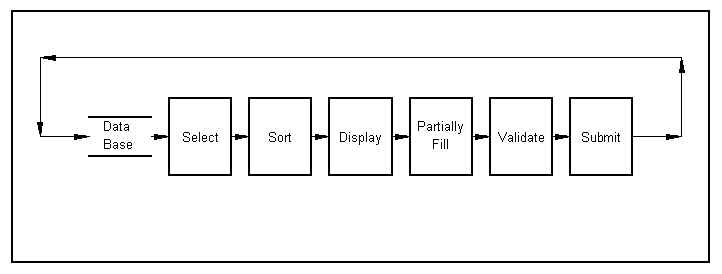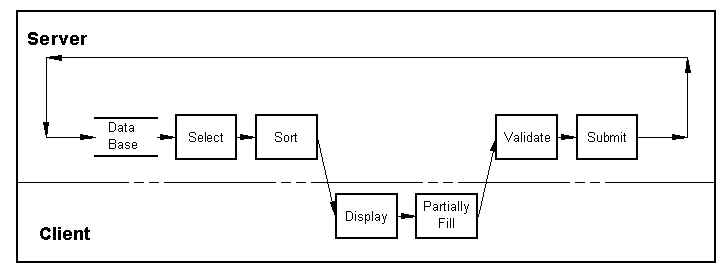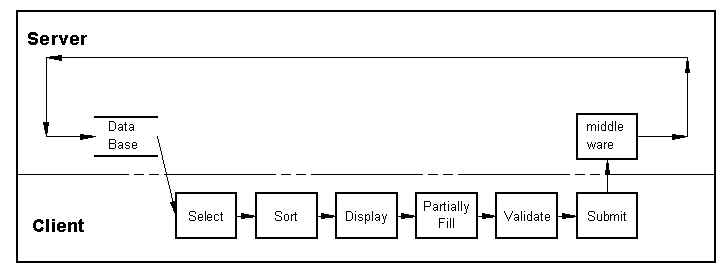
A conventional database application can be summarised by:

Normally middleware like perl,asp,php interfaces
to the database, and selects, sorts and formats for display.

My idea is this:- Use a generic perl script to append the submitted
data from the form, as parameters of a JavaScript function, onto the end
of a file, that is included as a normal page download. All the sorting,
selecting and formatting is done using JavaScript on the client's
browser.

Although JavaScript still requires some programming skill. Any novice programmer who has a PC with IE5 or netscape 4.5 has a development environment sufficent to start work. A simple graphics program and Frontpage express provide a good start.
A good HTML / JavaScript cookbook and a good HTML / JavaScript Reference is all that is needed. All the sorting select and formatting is done using JavaScript and HTML and is enough to put together simple web applications.
You need a good generic server side script ( provided by your webhoster ) that appends the form fields wrapped in JavaScript function calls to a file in your webhosted space.
You have to be happy to include this file of javascript function calls in your web pages, and how to use it to do some 'simple' JavaScript to sort, select and output HTML to summarise.
Given a nice looking page created by a WebPage creator application, and an understanding of HMTL, it is simple to cut and paste the HTML into JavaScript, so that the output is data driven by the data submitted on the web forms.
Either your page users are given explict access to the update form or the form is hidden on a maintainence page, and only invited users are given access to these pages.
We have avoided the need to set up Webservers, and a server side environment, a database, all of which require learning.
We do not need to tackle a large number of issues that normal web designers have to address just to get anything working.
Typically these could be:
As the ramp up of use of the application takes place, the web developer can aquaint themselves with the knowledge to set up a more robust server side application.
I invented this to solve a solution for the Sailing Club, to which I give my time for free. I was not trying to provide many £50 ph hours of employment. These hours should have been spent out on the water. We had a problem that need a pragmatic solution. Commercially, getting the solution to market was more important than an enterprise scaleable solution.
We expect about 5000 page hits and only expect about 200 to 300 transactions/submits per year!
In my example, my CGI script refers to a file called credits.js and
contains the line: credits=123 . When the script is run,
this is constrained to be 0 <= credits < 1000 say, to prevent
unlimited usage. If the CGI sucessfully decrements this and re-writes
the file, it goes on to process the form data, if credits is greater than 0.
There are two ways to replenish the credit:
Credits.js can be included by other pages so that the site owner can write a page that prints out the number of credits left, using javascript.
Doug Rice
Last updated